Meizhou Thousand Buddha Pagoda: Where Ancient Architecture Meets Natural Beauty
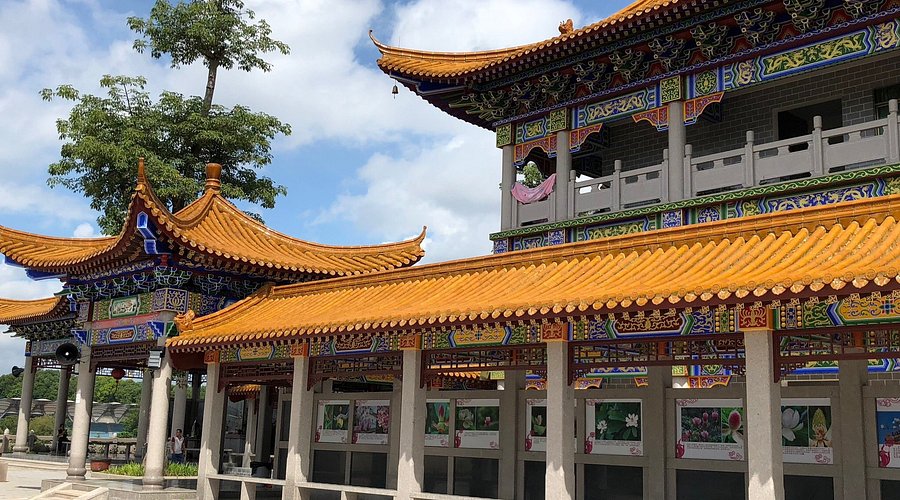
An Essential Guide to Visiting Meizhou Thousand Buddha Pagoda
Nestled atop the serene Lotus Hill in Meizhou, Guangdong Province, the Thousand Buddha Pagoda stands as a remarkable testament to the rich tapestry of Buddhist culture and history in China. Dating back more than a millennium to 965 AD, this architectural marvel is not just a site of worship but also a captivating journey into the heart of Zen philosophy and artistry. As you ascend the stone steps leading to the pagoda, you’ll be enveloped in a tranquil atmosphere that invites reflection and reverence.
The pagoda itself, towering at 36 meters, is an intricate structure of red and white granite, adorned with captivating reliefs and a collection of over a thousand Buddha statues. This unique feature gives the pagoda its name and makes it a highlight of any visit. Visitors from all corners of the globe come to witness its grandeur, explore the surrounding temple complex, and immerse themselves in the profound serenity that permeates the area.
Whether you’re a devout believer, a history enthusiast, or simply a curious traveler, the Thousand Buddha Pagoda offers an enriching experience that combines spirituality with stunning architectural beauty. Prepare to be inspired by the enduring legacy of this ancient site, where every corner tells a story and every moment spent here invites contemplation of the divine.
In This Guide
- An Essential Guide to Visiting Meizhou Thousand Buddha Pagoda
- The Rich History and Legends of Meizhou Thousand Buddha Pagoda
- Main Highlights: What You Absolutely Can’t Miss
- Planning Your Visit: A Practical Guide
- Tickets: Prices, Booking, and Tips
- How to Get There: A Complete Transportation Guide
- Local Cuisine and Accommodation Nearby
- Frequently Asked Questions
- Final Thoughts on Your Trip
The Rich History and Legends of Meizhou Thousand Buddha Pagoda
Nestled atop the picturesque Yanhua Mountain in Meizhou City, the Thousand Buddha Pagoda, or Qianfo Ta, stands as a magnificent testament to over a millennium of Buddhist heritage and architectural brilliance. Its origins trace back to the Southern Han Dynasty, specifically to 965 AD, marking it as one of the oldest structures in Guangdong Province. The pagoda was initially part of the Xiu Hui Temple in the eastern suburbs of Meizhou, a sanctuary that, unfortunately, fell victim to decay and destruction over the centuries.
In a bid to preserve this cultural gem, the pagoda underwent a significant relocation during the Qing Dynasty. In 1746, Governor Wang Zhefu orchestrated its move to the summit of Dongshan Mountain, where it could be better protected and appreciated. This act of preservation was a pivotal moment in the pagoda’s history, allowing it to withstand the ravages of time while continuing to serve as a spiritual haven for devotees and visitors alike.
The Thousand Buddha Pagoda is not merely a relic of the past; its architectural design reflects the intricate beauty of classical Chinese styles. Towering at 36 meters with an octagonal structure, the pagoda is constructed entirely from red and white granite, showcasing the craftsmanship of its builders. Each of its nine floors is adorned with exquisite carvings and reliefs, featuring a staggering total of 1,000 Buddha statues, which symbolize the pagoda’s name.
The pagoda’s journey through history has not been without its challenges. In the 1970s, the expansion of a nearby iron and steel factory encroached upon the site, making it difficult for visitors to access this revered landmark. However, in 1990, local residents rallied together to relocate the pagoda once more, ensuring its protection and continued significance within the community.
Today, the Thousand Buddha Pagoda is not only a place of worship but also a cultural and educational center. The adjacent Buddha Education and Training Center, completed in 2002, enhances its role as a hub of learning and spiritual growth. This five-story building houses classrooms, a large auditorium, and a scripture library, inviting visitors to delve deeper into the teachings of Buddhism.
Legends surrounding the Thousand Buddha Pagoda add to its allure. Many believe that the pagoda is a divine bridge connecting the earthly realm with the spiritual, a place where the faithful can seek guidance and enlightenment. Its luminous presence, especially at night when illuminated by soft lights, is often referred to as the “Pearl of Lingnan,” further enchanting all who come to witness its majesty.
As you explore the Thousand Buddha Pagoda, you find yourself walking through not only a historical site but also a living legend, where each stone and statue tells a story of faith, resilience, and the enduring beauty of Buddhist culture. Whether you seek spiritual solace or simply wish to marvel at its architectural splendor, the Thousand Buddha Pagoda promises an unforgettable experience that transcends time.
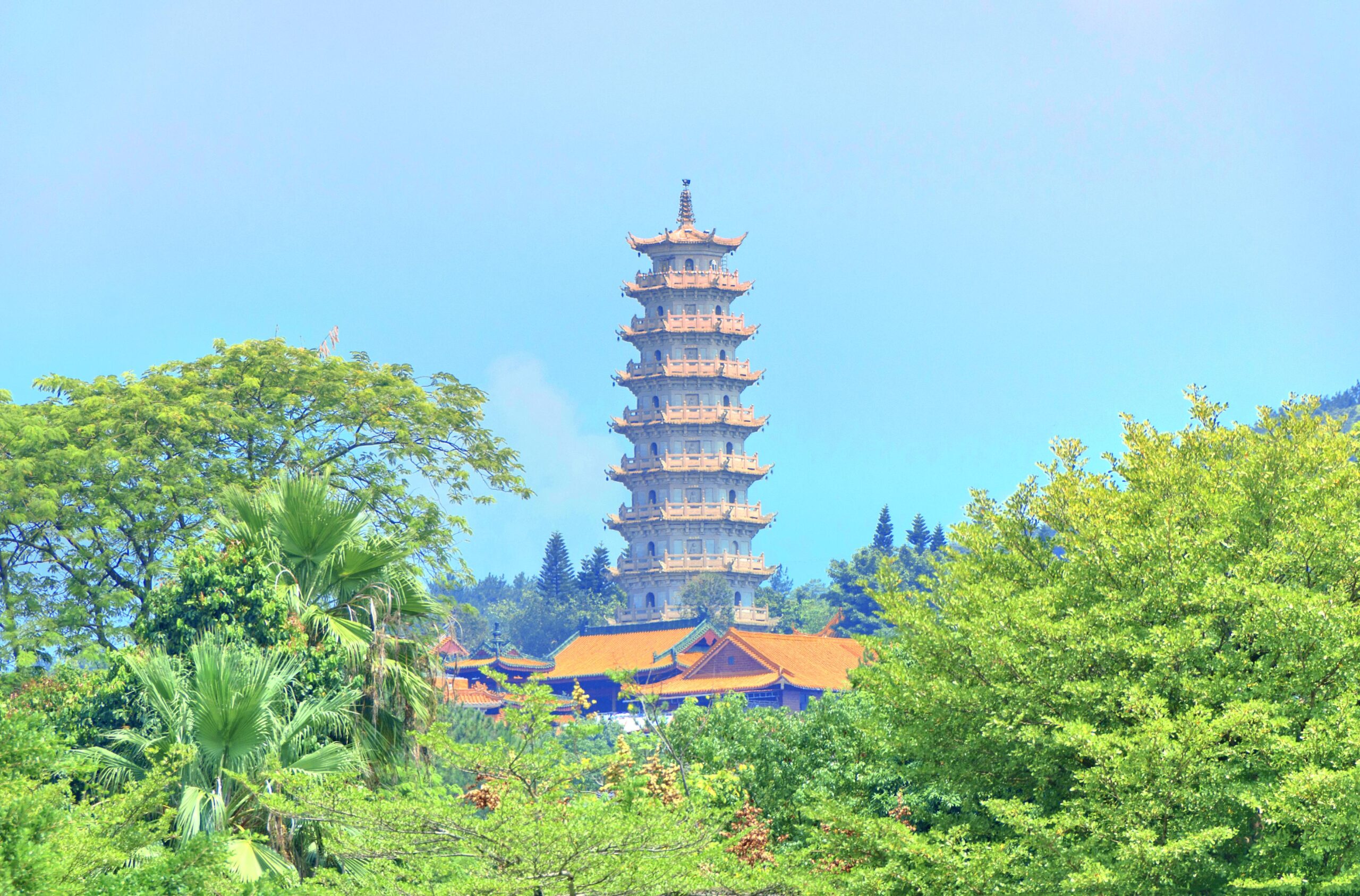
Meizhou Thousand Buddha Pagoda.
Main Highlights: What You Absolutely Can’t Miss
When visiting the Meizhou Thousand Buddha Pagoda, prepare to be captivated by a harmonious blend of spiritual significance and architectural grandeur. Nestled atop Yanhua Mountain in the Meijiang District of Meizhou City, this temple complex is not just a religious site but a window into the rich cultural tapestry of Guangdong Province.
The Thousand Buddha Pagoda
At the heart of the temple complex lies the magnificent Thousand Buddha Pagoda, a stunning octagonal structure standing 36 meters tall. Constructed over a millennium ago during the Southern Han Dynasty, the pagoda is a testament to ancient craftsmanship, featuring intricate granite masonry that enhances its majestic appearance. The pagoda is home to a remarkable seven-story iron tower, a relic from the same era, adorned with 1,000 small Buddha statues that contribute to its name. As you explore, don’t miss the opportunity to climb to the top, where breathtaking views of the surrounding landscape await.
Architectural Marvels
The temple complex itself is an architectural wonder, laid out symmetrically along an east-west axis with the Thousand Buddha Pagoda as its centerpiece. As you stroll through the grounds, you’ll encounter various halls, including the Tianwang Hall and the Maharishi Hall, each adorned with beautiful sculptures and religious iconography. The enchanting ambiance is further enhanced by the serene gardens and stone pathways that lead you deeper into the spiritual heart of the site.
Zen Culture and Spiritual Experience
A visit to the Thousand Buddha Pagoda is not just about sightseeing; it’s a chance to immerse yourself in the profound tranquility of Zen culture. The temple is a pilgrimage site for many, offering visitors the opportunity to reflect and meditate amidst the serene backdrop of nature and historical architecture. The presence of the Maitreya Buddha, a symbol of joy and contentment, welcomes all who seek solace and enlightenment.
Nighttime Illumination
For a truly magical experience, consider visiting at night when the pagoda is illuminated, casting a golden glow that enhances its ethereal beauty. Known as the “Pearl of Lingnan,” the pagoda’s lights reflect off the surrounding landscape, creating a mesmerizing atmosphere that invites contemplation and wonder.
Accessibility and Visitor Information
Visiting the Thousand Buddha Pagoda is made easy with free entry to the temple, and a nominal fee of just 5 yuan to climb the pagoda. Accessible via local bus routes, the site is well-connected, allowing for an effortless journey into the heart of Meizhou’s spiritual heritage.
Final Thoughts
The Meizhou Thousand Buddha Pagoda is more than just a destination; it’s an experience that enriches your understanding of Buddhist culture and history. Whether you’re an avid traveler or a spiritual seeker, this site promises to leave a lasting impression that resonates long after your visit. Plan your trip to uncover the beauty and serenity that await at this remarkable landmark.
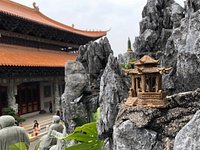
Meizhou Thousand Buddha Pagoda.
Planning Your Visit: A Practical Guide
Planning Your Visit: A Practical Guide
If you’re looking to immerse yourself in the rich tapestry of Buddhist culture while exploring the stunning beauty of Guangdong Province, a visit to the Meizhou Thousand Buddha Pagoda is a must. This ancient temple complex, perched atop Yanhua Mountain, offers not only spiritual enlightenment but also breathtaking panoramic views and architectural marvels.
Getting There
Location:
The Thousand Buddha Pagoda Temple is located at the top of Lotus Hill, within the Meijiang District of Meizhou City, Guangdong Province.
Transportation:
To reach the temple, take the local bus line 6 to Gangbei Station. From there, it’s just a short and pleasant walk up to the temple entrance. Consider using ride-sharing services or taxis if you prefer a more direct route.
Opening Hours and Admission
Hours of Operation:
The temple is open daily from 8:00 AM to 5:30 PM. Keep in mind that the last entry to the pagoda for climbing is typically well before closing time, so plan your visit accordingly.
Entrance Fees:
While entry to the temple complex is free, there is a nominal fee of 5 yuan (approximately $0.75) to climb the Thousand Buddha Pagoda. This small charge grants you access to one of the most iconic features of the site.
What to Expect
Temple Complex:
As you enter the Thousand Buddha Pagoda Temple, you’ll be greeted by a series of beautifully designed structures arranged in a grand, symmetrical layout. Key features include:
- The Main Pagoda: Standing at 36 meters tall, this impressive octagonal structure is made entirely of granite, showcasing intricate architectural details typical of classical Chinese design.
- Surrounding Halls: Explore the various halls dedicated to different deities, including the God of Wealth and Guanyin Pavilion, which offer insights into Buddhist practices and beliefs.
- The Inner Tower: Inside the main pagoda, discover a seven-story iron tower dating back to the Southern Han Dynasty, adorned with thousands of Buddha statues.
Scenic Views:
After climbing the stone steps of the pagoda, take a moment to enjoy the stunning views of the surrounding landscape. The temple’s elevated position provides a spectacular backdrop for photos, especially at sunrise or sunset when the light casts a magical glow.
Tips for Your Visit
- Respectful Attire: As this is a religious site, dress modestly and respectfully. Comfortable shoes are also recommended, as you will be doing some walking and climbing.
- Photography: While photography is encouraged in many areas, be mindful of signs indicating restrictions, especially in prayer halls or during ceremonies.
- Local Cuisine: After your visit, consider sampling local Hakka cuisine at nearby restaurants. Meizhou is famous for its diverse culinary offerings, which will round out your cultural experience.
- Plan Ahead: To avoid the crowds, especially on weekends and public holidays, try to visit during weekdays or early in the morning.
Nearby Attractions
Once you’ve soaked in the spiritual atmosphere of the Thousand Buddha Pagoda, consider exploring other nearby attractions, such as:
- Hakka Museum of China: Just a short distance away, this museum offers insights into the unique Hakka culture of the region.
- Hakka Park: A beautiful space to relax and enjoy nature, providing a serene contrast to the bustling temple grounds.
Conclusion
A visit to the Meizhou Thousand Buddha Pagoda is not just a journey to a beautiful temple; it’s an opportunity to connect with centuries of history and culture. With its serene atmosphere, stunning architecture, and rich traditions, this site is sure to leave a lasting impression on any traveler. Whether you’re a history buff, a spiritual seeker, or simply an admirer of beautiful landscapes, this destination in Guangdong will not disappoint.
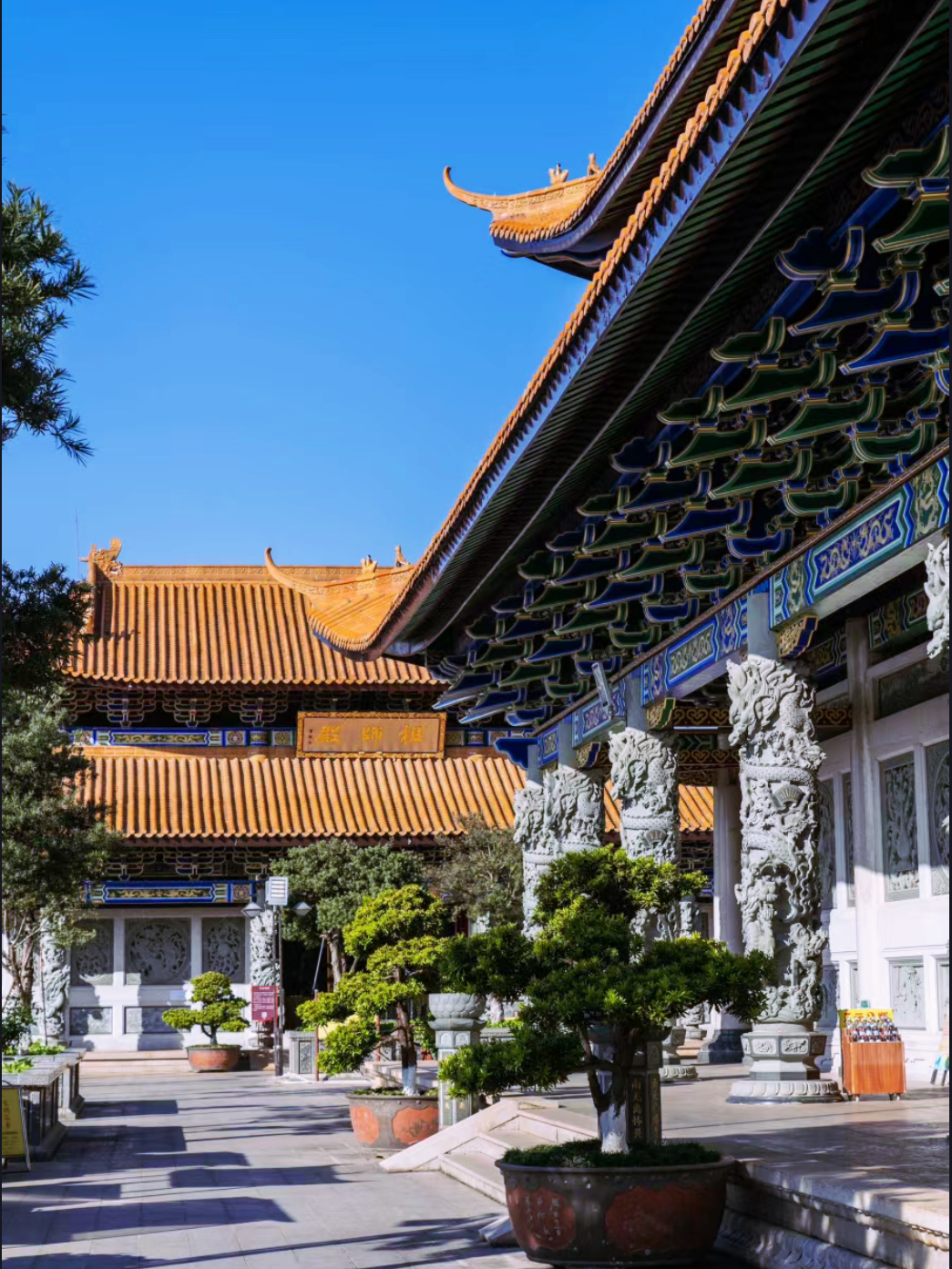
Meizhou Thousand Buddha Pagoda.
Tickets: Prices, Booking, and Tips
Visiting the Meizhou Thousand Buddha Pagoda is not only an enriching cultural experience but also a budget-friendly adventure for international travelers. Here’s what you need to know about tickets, pricing, and tips for your visit.
Ticket Information
- Entrance Fee: Access to the temple grounds is free, allowing you to explore the beautiful surroundings and admire the stunning architecture without spending a dime.
- Climbing the Pagoda: To ascend the iconic Thousand Buddha Pagoda, a ticket is required. The cost is a mere 5 yuan (approximately $0.75 USD) per person, making it an affordable option for those looking to enjoy panoramic views from the top.
Booking Tips
- No Advance Booking Required: Tickets for climbing the pagoda can be purchased on-site. This means you can plan your visit flexibly without the need for pre-booking.
- Best Time to Visit: The pagoda is open from 8:00 AM to 5:30 PM. To avoid crowds, consider visiting early in the morning or later in the afternoon. This is particularly advantageous for capturing stunning photos of the pagoda in the soft light of dawn or dusk.
Getting There
- Transportation: The Thousand Buddha Pagoda is accessible via public transport. Take bus number 6 to Gangbei Station, and it’s just a short walk from there to the temple entrance.
Additional Tips
- Explore the Surroundings: Beyond the pagoda, the temple complex features several other halls and pavilions that showcase exquisite Buddhist architecture and art. Take your time to wander and soak in the serene atmosphere.
- Respectful Attire: As this is a religious site, it is advisable to dress modestly. Comfortable shoes are also recommended, especially if you plan to climb the pagoda.
- Photography: The pagoda is especially beautiful at night when illuminated, so if you have the chance, consider returning after sunset for a different perspective.
By following these guidelines, you can make the most of your visit to the Meizhou Thousand Buddha Pagoda, ensuring a memorable and enlightening experience. Enjoy your journey into the heart of Buddhist culture in Guangdong!
How to Get There: A Complete Transportation Guide
Reaching the stunning Meizhou Thousand Buddha Pagoda, a remarkable testament to Buddhist architecture and culture, is an adventure that promises both ease and excitement. Whether you’re traveling from nearby cities or making Meizhou your final destination, here’s everything you need to know to get there.
Arriving by Air
Fuzhou Changle International Airport (FOC) is the closest major airport, approximately 200 kilometers from Meizhou. From the airport, you can take a taxi or book a ride-sharing service to the Meizhou city center. The journey will take about 2.5 to 3 hours.
Alternatively, Shenzhen Bao’an International Airport (SZX) offers more international flight options and is about 300 kilometers away. From Shenzhen, you can travel to Meizhou via high-speed train or long-distance bus.
By Train
Meizhou is well-connected by rail, making it easy to reach from various cities in Guangdong Province and beyond. The local train station, Meizhou Railway Station, is serviced by regular trains from major cities like Guangzhou, Shenzhen, and Dongguan.
From Guangzhou, for example, high-speed trains take approximately 2 to 2.5 hours. Once you arrive at Meizhou Railway Station, you can take a taxi or bus to the pagoda.
By Bus
Long-distance buses are available from several cities, including Guangzhou, Shenzhen, and Dongguan. Buses to Meizhou typically arrive at the Meizhou Bus Station. This station is conveniently located near the city center, making it easy to access local transportation to the Thousand Buddha Pagoda.
Local Transportation
Upon arriving in Meizhou, getting to the Thousand Buddha Pagoda is straightforward:
-
Public Bus: You can take Bus 6 to Gangbei Station. From there, it’s a short walk to the pagoda. Buses run frequently, making it a convenient option for budget-conscious travelers.
-
Taxi or Ride-Sharing: Taxis are widely available, and you can also use local ride-sharing apps for a more comfortable journey. The ride from the city center to the pagoda will take around 15-20 minutes, depending on traffic.
-
Walking: If you’re staying nearby, the pagoda is accessible on foot, allowing you to enjoy the local scenery and atmosphere of Meizhou.
Tips for Your Visit
- Entrance Fees: Entry to the Thousand Buddha Pagoda Temple is free, but there is a nominal fee of 5 yuan to climb the tower.
- Opening Hours: The temple is open daily from 8:00 AM to 5:30 PM, so plan your visit accordingly.
- Best Time to Visit: Early morning or late afternoon provides the best light for photography and a more serene experience.
With this guide, you’re all set to explore the breathtaking Thousand Buddha Pagoda in Meizhou. Whether you’re drawn by its architectural beauty, rich history, or the tranquil atmosphere, the journey will be as rewarding as the destination itself. Happy travels!
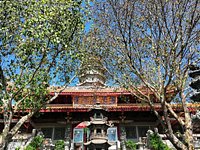
Meizhou Thousand Buddha Pagoda.
Local Cuisine and Accommodation Nearby
When visiting the Meizhou Thousand Buddha Pagoda, you’ll want to immerse yourself in the local culture and cuisine. Fortunately, the surrounding area offers a delightful array of dining options and comfortable accommodations, making your visit all the more enjoyable.
Culinary Delights
Just a stone’s throw from the pagoda, you’ll find a variety of restaurants that showcase the rich flavors of Guangdong cuisine. Here are a few must-try spots:
-
WanJia Le Xiang CaiGuan: Rated highly by locals, this restaurant serves authentic Hunan dishes with a spicy twist. The flavors here are bold, making it a favorite for adventurous eaters.
-
JinYuan Restaurant: Known for its Cantonese cuisine, JinYuan offers a warm atmosphere perfect for family dining. Their dim sum is particularly popular, so be sure to sample a few varieties.
-
Youju Mixology Homebar: If you’re in the mood for something more relaxed, this brew pub has an extensive drink menu featuring local craft beers and creative cocktails, paired with a selection of light bites.
-
Toriyamana: For a taste of Japan, this spot specializes in sushi and other traditional Japanese dishes, providing a refreshing change of pace.
Places to Stay
After a day of exploring the pagoda and its surroundings, a restful night is essential. Here are some accommodations nearby that cater to varying preferences and budgets:
-
Meizhou Hotel: Located conveniently close to the pagoda, this hotel offers comfortable rooms and modern amenities. The on-site restaurant serves a mix of local and international cuisine, ensuring you have everything you need on-site.
-
Hakka Hotel: This charming hotel is steeped in local culture, featuring Hakka architectural styles. It’s an excellent choice for those wanting to experience traditional Chinese hospitality.
-
Meizhou International Hotel: For travelers seeking luxury, this upscale hotel provides spacious rooms with stunning views of the city. The hotel’s restaurant offers a wide range of dishes, from Cantonese to Western, catering to all tastes.
Conclusion
With a rich culinary scene and comfortable accommodations, your visit to the Meizhou Thousand Buddha Pagoda can be both culturally enriching and relaxing. Whether you’re indulging in spicy Hunan flavors or settling down in a cozy hotel, the area promises a memorable experience for international travelers. Enjoy your journey through this captivating slice of Guangdong!
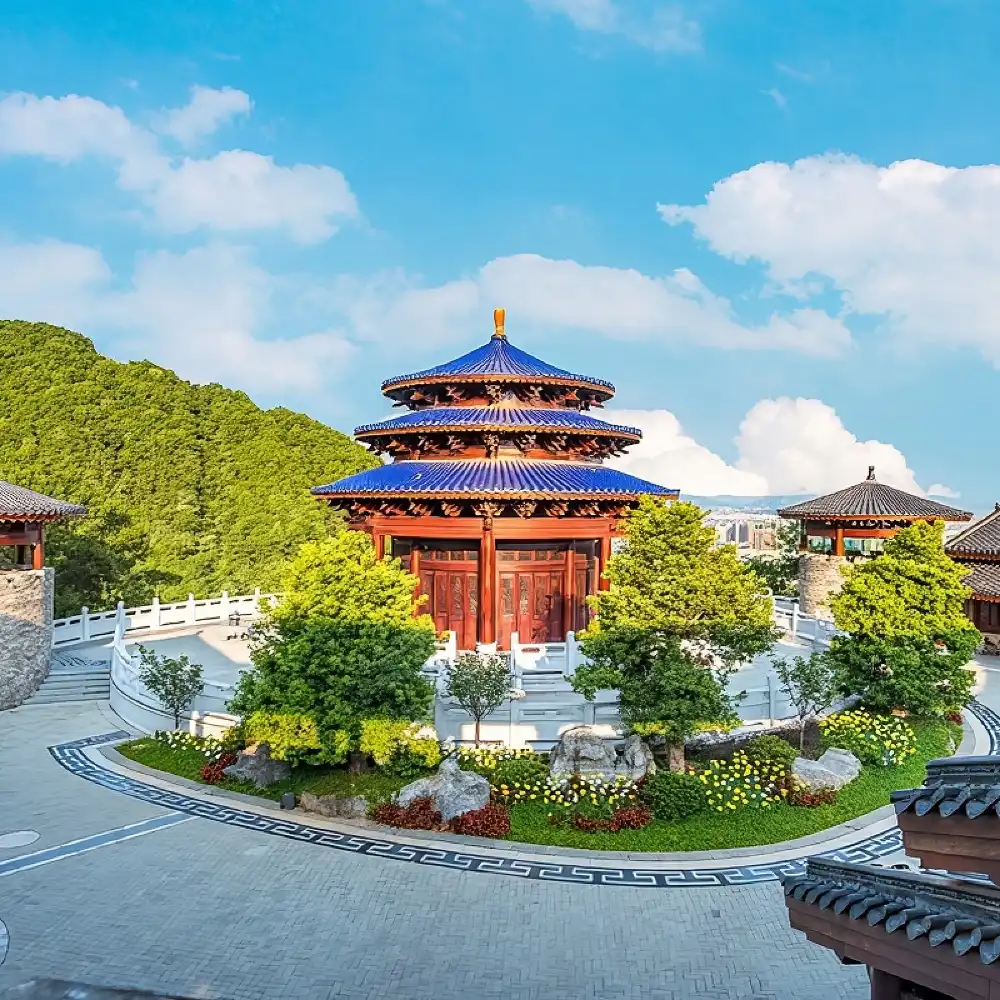
Meizhou Thousand Buddha Pagoda.
Frequently Asked Questions
-
What is the best time to visit Meizhou Thousand Buddha Pagoda?
The ideal time to visit is during the spring (March to May) and autumn (September to November) when the weather is mild and pleasant. This allows you to fully enjoy the scenic views and the peaceful atmosphere of the temple complex. -
Is there an entrance fee to the Thousand Buddha Pagoda?
Entrance to the temple is free; however, there is a small fee of 5 yuan required to climb the pagoda itself. This ticket grants you access to breathtaking views of the surrounding area from the top. -
How do I get to the Meizhou Thousand Buddha Pagoda?
You can take bus number 6 to Gangbei Station, which is a short walking distance from the pagoda. Taxis are also readily available throughout Meizhou City for a more direct route. -
What are the opening hours of the Thousand Buddha Pagoda?
The temple is open daily from 8:00 AM to 5:30 PM. It’s advisable to arrive earlier in the day to avoid crowds and to have more time to explore the site’s tranquil surroundings. -
Are there any guided tours available?
While self-guided visits are popular, you can find local tour guides who offer detailed insights into the temple’s history and architecture. It’s a great way to enrich your experience and learn more about Buddhist culture. -
What should I wear when visiting the pagoda?
Visitors are encouraged to dress modestly out of respect for the sacred site. Comfortable shoes are advisable, as you will be walking and climbing steps. Lightweight clothing is recommended, especially during the warmer months. -
Can I take photos at the Thousand Buddha Pagoda?
Yes, photography is permitted throughout the temple complex. However, be mindful of any signs indicating restricted areas, especially in places where worship takes place. -
What other attractions are nearby?
After visiting the Thousand Buddha Pagoda, consider exploring the Hakka Museum of China and Hakka Park, both located within a short distance. These sites offer further insights into the rich cultural heritage of the region.
Final Thoughts on Your Trip
As your journey comes to an end at the majestic Meizhou Thousand Buddha Pagoda, take a moment to reflect on the serene beauty and the rich tapestry of history that surrounds you. This remarkable site not only showcases the architectural prowess of ancient China but also serves as a spiritual sanctuary, inviting visitors to immerse themselves in the tranquility and wisdom of Zen culture.
The breathtaking views from the pagoda, the intricate craftsmanship of the statues, and the peaceful ambiance of the temple grounds create an experience that is both inspiring and humbling. Whether you’re a devoted follower of Buddhism or simply an eager traveler seeking to connect with a different culture, the Thousand Buddha Pagoda offers a glimpse into the deep-rooted traditions of Guangdong Province.
As you leave, carry with you the echoes of the past and the inspiration for the present. May the serenity of the pagoda accompany you on your travels, reminding you of the beauty that lies in both the journey and the destination. Safe travels, and may your adventures ahead be as enriching as the moments spent within the embrace of the Thousand Buddha Pagoda.